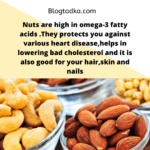-By: Bhavisha Changrani
This chapter delves into the fascinating world of food, exploring its origins and understanding the diverse sources that sustain us. We’ll journey through the different food sources, examine the edible parts of plants, and investigate the varied dietary habits of animals, ultimately understanding the interconnectedness of life through food chains.
1. Introduction: Food – The Fuel of Life
Food is an indispensable part of our lives, a fundamental requirement for survival and healthy growth. It’s the fuel that powers our bodies, providing the energy we need for all our activities, from playing and studying to simply breathing and thinking. Food not only provides energy but also helps our bodies repair and rebuild tissues, keeping us strong and resilient. Just like plants and animals, we depend on food to live and thrive. But have you ever paused to consider the incredible journey our food takes before it reaches our plates? Where does it all come from?
2. Food Variety: A Culinary Kaleidoscope
India, with its rich tapestry of cultures and traditions, boasts an astonishing array of food habits. From the fiery curries of the South, infused with aromatic spices, to the wholesome rotis and parathas of the North, each region has its unique culinary identity. Even within a single region, the diversity is remarkable! Think about your own meals – what did you eat yesterday? Was it the same as what you had last week? Chances are, it was different! This variety not only makes our meals exciting and enjoyable but also ensures we receive a wide spectrum of essential nutrients. This culinary kaleidoscope reflects the diverse resources available to us and the ingenuity of human cultures in transforming them into delicious and nourishing meals.
3. Food Ingredients: The Building Blocks of a Dish
Every dish, no matter how simple or elaborate, is composed of different ingredients. These are the raw materials we combine and process to create a particular food item. Consider a simple vegetable curry. We might need a variety of vegetables like potatoes, carrots, and peas, along with spices such as turmeric, cumin, and coriander. We’ll also need cooking oil, salt, and perhaps some water. All these components – the vegetables, spices, oil, salt, and water – are the ingredients of our vegetable curry.
But where do these ingredients originate? Let’s trace them back to their sources. The vegetables, of course, come from plants. The spices, too, are derived from plants – turmeric from the turmeric root, cumin from cumin seeds, and coriander from coriander seeds. Even the cooking oil often comes from plant seeds, such as mustard seeds, sunflower seeds, or groundnuts. Understanding the origin of our ingredients helps us appreciate the connection between our food and the natural world.
4. Plant Sources: Nature’s Bounty
Plants are a primary source of our food, providing us with a vast array of edible parts. We consume different parts of plants, each offering unique nutritional benefits:
- Roots: Carrots, radishes, turnips, and sweet potatoes are examples of roots that we eat. These roots serve as storage organs for the plant, accumulating nutrients that we then consume.
- Stems: Sugarcane, which provides us with sugar, and potato, which is an underground stem (tuber), are examples of stems we eat. The stems often transport water and nutrients throughout the plant.
- Leaves: Spinach, lettuce, cabbage, and fenugreek (methi) are leaves that we incorporate into our diets. Leaves are the sites of photosynthesis, where plants convert sunlight into energy.
- Flowers: Cauliflower and broccoli are examples of flowers that we eat. These are actually the flower heads of the plant, harvested before they fully bloom.
- Fruits: Mangoes, apples, bananas, oranges, and berries are fruits that we relish. Fruits develop from flowers and often contain seeds, playing a crucial role in plant reproduction.
- Seeds: Rice, wheat, pulses (like beans, lentils, and chickpeas), and corn are seeds that form a staple part of our diet. Seeds are packed with nutrients, providing us with carbohydrates, proteins, and other essential elements.
The diversity of edible plant parts highlights the remarkable adaptability of plants and their vital role in our food supply.
5. Animal Sources: From Farm to Table
Animals are another significant source of food, providing us with essential nutrients, particularly protein. We obtain various food products from animals:
- Milk: Cows, buffaloes, goats, and camels provide us with milk, a highly nutritious beverage. Milk is not only consumed directly but also used to produce a wide range of dairy products like cheese, butter, yogurt, and ice cream.
- Eggs: Hens and ducks lay eggs, which are a rich source of protein and other essential nutrients. Eggs are a versatile ingredient used in countless dishes.
- Meat: Goats, sheep, chickens, and fish are sources of meat, providing us with protein and other vital nutrients. Meat consumption varies across cultures and dietary preferences.
- Honey: Bees collect nectar from flowers and transform it into honey, a natural sweetener. Honey is not only delicious but also possesses some medicinal properties.
6. What Do Animals Eat? A Variety of Diets
Just like humans, animals require food to survive and thrive. However, different animals have different dietary preferences. We can categorize animals based on what they eat:
- Herbivores: These animals are exclusively plant-eaters. Cows, goats, deer, horses, and elephants are examples of herbivores. They have specialized digestive systems to process plant matter.
- Carnivores: These animals are meat-eaters, preying on other animals for food. Lions, tigers, wolves, and eagles are carnivores. They possess sharp teeth and claws adapted for hunting and consuming meat.
- Omnivores: These animals eat both plants and animals. Humans, bears, pigs, and crows are omnivores. Their flexible diet allows them to adapt to different food sources available in their environment.
Understanding the dietary habits of animals is essential for comprehending their role in the ecosystem and their place in the food chain.
7. Food Chains: The Flow of Energy through Life
A food chain illustrates the flow of energy from one living organism to another in an ecosystem. It’s a sequence that shows who eats whom, starting with plants, which are the primary producers of food. Plants use sunlight, water, and carbon dioxide to create their own food through a process called photosynthesis. Then, herbivores consume the plants, obtaining the energy stored within them. Carnivores, in turn, eat the herbivores, transferring the energy further up the chain.
A simple food chain can be represented as follows:
Grass → Grasshopper → Frog → Snake → Eagle
In this food chain, grass is the producer, grasshopper is the primary consumer (herbivore), frog is the secondary consumer (carnivore), snake is the tertiary consumer (carnivore), and eagle is the apex predator. The arrows indicate the direction of energy flow. Food chains demonstrate the interconnectedness of life and how energy moves through an ecosystem.
8. Summary: A Tapestry of Nourishment
Food is an indispensable requirement for all living organisms. We obtain our food from both plant and animal sources. Plants provide us with a diverse range of fruits, vegetables, grains, and other food items, while animals provide us with milk, eggs, meat, and honey. Understanding the different food sources and the dietary habits of animals helps us appreciate the remarkable diversity of life on Earth. By consuming a balanced diet comprising various food sources, we can ensure our bodies receive the necessary nutrients for optimal health and well-being. The journey of our food, from its origin to our plates, is a testament to the intricate web of life and the essential role food plays in sustaining it.
9. Keywords to Remember:
- Ingredients: The components needed to prepare a dish.
- Plant Sources: Food derived from plants (roots, stems, leaves, flowers, fruits, seeds).
- Animal Sources: Food derived from animals (milk, eggs, meat, honey).
- Herbivores: Animals that consume only plants.
- Carnivores: Animals that consume other animals.
- Omnivores: Animals that consume both plants and animals.
- Food Chain: A sequence depicting the transfer of energy from one organism to another.
- Photosynthesis: The process by which plants create their own food using sunlight, water, and carbon dioxide.
- Nutrients: Substances in food that provide nourishment for growth and maintenance of life.
- Ecosystem: A community of living organisms interacting with each other and their physical environment.
10. Activities to Explore:
- Create a comprehensive list of your favorite food items and identify their ingredients and sources (plant or animal).
- Construct various food chains involving different organisms, illustrating the flow of energy.
- Research the diverse types of plants and animals in your region, focusing on their dietary habits and their role in the local ecosystem.
- Investigate the different methods of food production, from traditional farming practices to modern agricultural techniques.
- Explore the nutritional value of different food groups and create a balanced diet chart for yourself.
- Visit a local farm or market to learn firsthand about the journey of food from its source to our tables.
By actively engaging with these topics, you can develop a deeper appreciation for the intricate world











